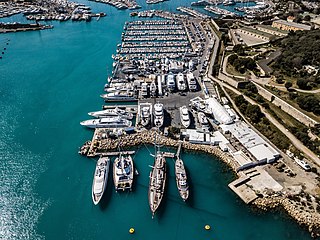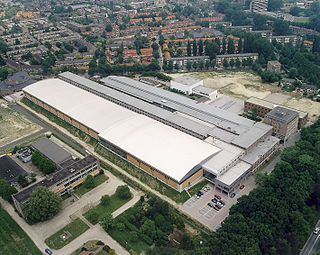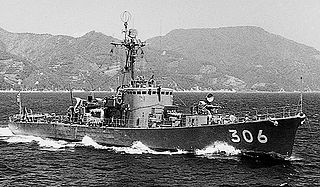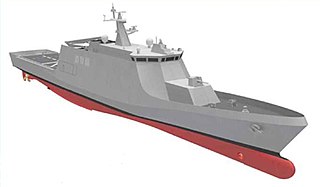
Ross John Anderson is a researcher, author, and industry consultant in security engineering. He is Professor of Security Engineering at the Department of Computer Science and Technology, University of Cambridge where he is part of the University's security group.

Naval architecture, or naval engineering, is an engineering discipline incorporating elements of mechanical, electrical, electronic, software and safety engineering as applied to the engineering design process, shipbuilding, maintenance, and operation of marine vessels and structures. Naval architecture involves basic and applied research, design, development, design evaluation (classification) and calculations during all stages of the life of a marine vehicle. Preliminary design of the vessel, its detailed design, construction, trials, operation and maintenance, launching and dry-docking are the main activities involved. Ship design calculations are also required for ships being modified. Naval architecture also involves formulation of safety regulations and damage-control rules and the approval and certification of ship designs to meet statutory and non-statutory requirements.

A shipyard, also called a dockyard or boatyard, is a place where ships are built and repaired. These can be yachts, military vessels, cruise liners or other cargo or passenger ships. Compared to shipyards, which are sometimes more involved with original construction, dockyards are sometimes more linked with maintenance and basing activities. The terms are routinely used interchangeably, in part because the evolution of dockyards and shipyards has often caused them to change or merge roles.

Stephen Byram Furber is a British computer scientist, mathematician and hardware engineer, currently the ICL Professor of Computer Engineering in the Department of Computer Science at the University of Manchester, UK. After completing his education at the University of Cambridge, he spent the 1980s at Acorn Computers, where he was a principal designer of the BBC Micro and the ARM 32-bit RISC microprocessor. As of 2018, over 100 billion copies of the ARM processor have been manufactured, powering much of the world's mobile computing and embedded systems.

A ship model basin is a basin or tank used to carry out hydrodynamic tests with ship models, for the purpose of designing a new ship, or refining the design of a ship to improve the ship's performance at sea. It can also refer to the organization that owns and operates such a facility.

A small waterplane area twin hull, better known by the acronym SWATH, is a catamaran design that minimizes hull cross section area at the sea's surface. Minimizing the ship's volume near the surface area of the sea, where wave energy is located, minimizes a vessel's response to sea state, even in high seas and at high speeds. The bulk of the displacement necessary to keep the ship afloat is located beneath the waves, where it is less affected by wave action. Wave excitation drops exponentially as depth increases, so wave action normally does not affect a submerged submarine at all. Placing the majority of a ship's displacement under the waves is similar in concept to creating a ship that rides atop twin submarines.

Marine engineering is the engineering of boats, ships, submarines, and any other marine vessel. Here it is also taken to include the engineering of other ocean systems and structures – referred to in certain academic and professional circles as “ocean engineering.”

MARIN, the Maritime Research Institute Netherlands, is one of the leading institutes in the world for hydrodynamic research and maritime technology. The services incorporate a unique combination of simulation, model testing, full-scale measurements and training programmes. MARIN provides services to the shipbuilding and offshore industry and governments. Customers include commercial ship builders, fleet owners, naval architects, classification societies, oil and LNG companies and navies all over the world.
William B. Morgan is an American naval architect and renowned expert in propeller design.

Dame Ann Patricia Dowling is a British mechanical engineer who researches combustion, acoustics and vibration, focusing on efficient, low-emission combustion and reduced road vehicle and aircraft noise. Dowling is a Deputy Vice-Chancellor and Professor of Mechanical Engineering, and from 2009 to 2014 she was Head of the Department of Engineering at the University of Cambridge, where she was the first female professor in 1993. She was President of the Royal Academy of Engineering from 2014 to 2019, the Academy's first female president.

Sir Thomas John Parker is a British businessman. He is chairman of Laing O'Rourke and former chairman of Pennon Group, a director of Carnival Corporation & plc and lead non-executive director at the Cabinet Office. He has been a director or chairman of numerous other public companies including Airbus, Anglo American plc, Babcock International, British Gas, DP World, Lattice Group, National Grid plc and Ombu Group. He is a past President of the Royal Academy of Engineering, patron at the Centre for Process Innovation and a Visiting Fellow of the University of Oxford.

Mitsui Engineering & Shipbuilding is a Japanese company. It is listed on the Nikkei 225. Mitsui E&S is one of the companies of the Mitsui Group.

The USS Banner was originally U.S. Army FS-345 serving in the Southwest Pacific during the closing days of World War II as one of the Army's United States Coast Guard crewed ships. In 1950 the ship was acquired by the Navy and converted into a light auxiliary cargo (AKL). In 1967 the ship was converted for electronic intelligence and reclassified as Auxiliary General Environmental Research (AGER).

Imabari Shipbuilding is a major Japanese ship building, marine engineering, and service company headquartered in Imabari, Ehime Prefecture, Japan.

JS Chiyoda was a submarine rescue ship of the Japan Maritime Self-Defense Force.

The Hibiki-class ocean surveillance ship is a class of surveillance ships operated by the Japan Maritime Self-Defense Force. The ships have a small-waterplane-area twin hull (SWATH) design.
Multi-Role Support Ship (MRSS) is a class of amphibious ship planned for the Royal Malaysian Navy (RMN).

The Kamome-class submarine chaser was a class of submarine chasers of the Japan Maritime Self-Defense Force after the Second World War, in the mid-1950s.

The Next-Generation Offshore Patrol Vessel (OPV) program consists of a planned 12 OPV-type patrol vessels to be operated by the Japan Maritime Self-Defense Force (JMSDF).


















